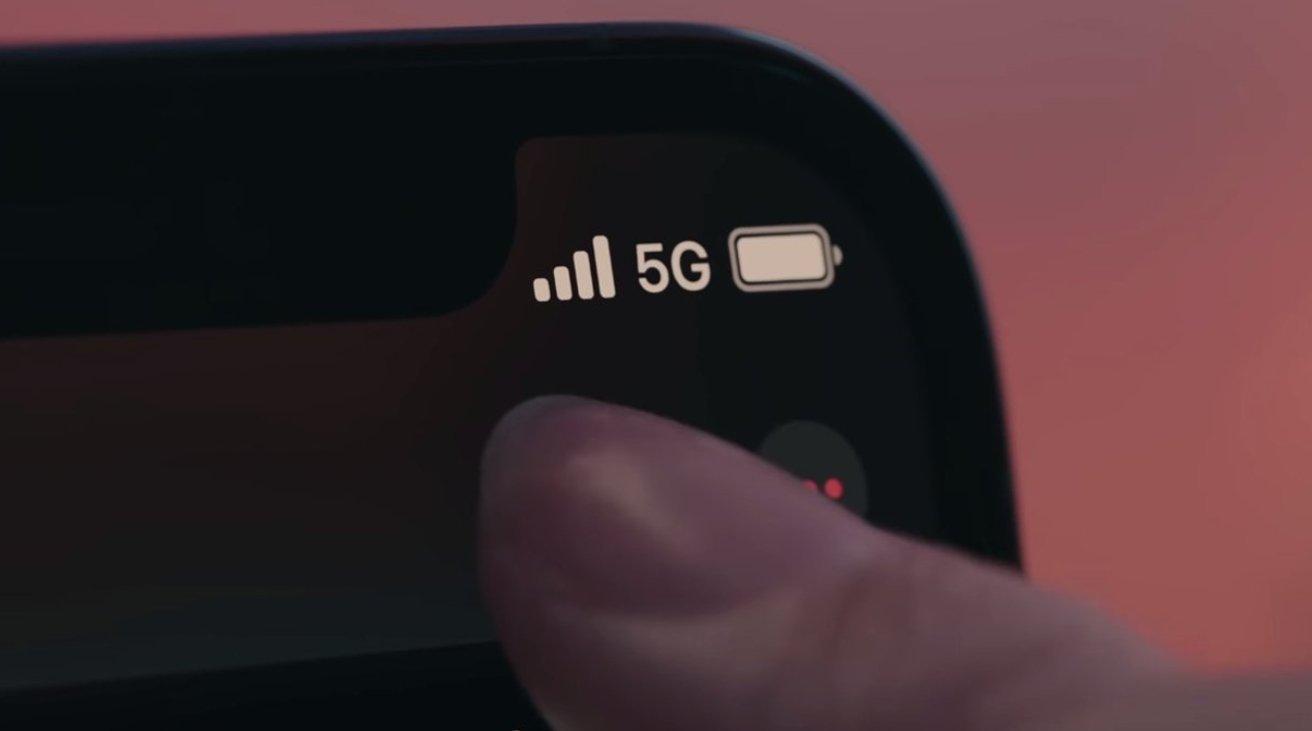Apple plans three-year rollout of its self-made iPhone modem, starting with iPhone SE
Apple's quest to replace Qualcomm modems with its own in the iPhone and other products will take place over three years, with plans set to replace all of them by 2027.

An iPhone connection indicator
Apple has been working on its own 5G modem designs for a few years, as part of a wider program of bringing the design work in-house. While the introduction of the component in Apple's hardware lineup is expected to happen soon, it may be a more gradual rollout than you'd expect.
The initial wave of chips will be used by the iPhone SE, according to a source of Bloomberg. Just as raised in previous reports, this would first take place in 2025, though the initial introductions won't be as technologically advanced as Qualcomm's offering.
The report adds that going for low-end products like the iPhone SE at first is due to modem development being quite risky. It's an important component, since dropped calls and missed notifications can be fatal for a smartphone.
It will also apparently only support four-carrier aggregation at first, which is down from the six or more bands that Qualcomm's modems can use.
Later iterations of the modem chips will also get more advanced over time, and therefore should be included in higher-specification hardware too.
Apple's ultimate aim is to get past Qualcomm in terms of technology by 2027. If it can, it should be incorporating its own modem across its ecosystem of devices, with Qualcomm out of sight.
A plausible summary
The Bloomberg report offers a fairly sturdy timeline for Apple's modem rollout. However, a lot of this has been reported before.
The timing of the chip drive seemingly correlates with other reports into the topic, including the initial iPhone SE gambit. It has also been said that it hasn't yet been equipped with mmWave, so it may not get used in upper-tier models at first.
The 2027 replacement date has also been raised by analyst Ming-Chi Kuo in September, which adds weigh to the three-year cycle.
Another big reason for the 2027 target is one that's legally and financially motivated.
It was discovered that Apple and Qualcomm extended a global patent license agreement by two years. The extension and a contract for the use of Snapdragon 5G Modem-RF systems will terminate in March 2027.
If Apple can get its modem project to a good-enough state, it won't need to extend that contract and rely on Qualcomm beyond that date.
However, to do that, it has to fix its continuing modem development issues and catch up with Qualcomm's tech.
Rumor Score: Possible
Read on AppleInsider

Comments
Both companies (and others) have far weight in terms of patents, engineering capacity and compatibility with ICT infrastructure.
Most of Apple's modem talent came through the acquisition of Intel's division, which was struggling to deliver and seemingly still is.
Apple is doing far more in the wireless space in terms of research now but I can't see them challenging those who are designing, manufacturing and deploying the systems all phones will have to connect to.
Better sat-comm performance is very nice too. It’s in the same bucket at more connections in more places.
Qualcomm is the best, today. They might not be the best in 5 years time. Who knows?
I just hope in 10 years we aren't waking up to articles about how Apple products with the in-house modem design are now "sort of not that bad anymore" after years of embarrassing failure.
Apple bought a lot of patents from Intel and can innovate and integrate better than Qualcomm.
You don't see many Google map fans comparing with Apple Maps anymore do you? Because they would lose.
Time will tell.
So I find it hard to believe that Apple would release a modem that was markedly inferior to Qualcomm. Imagine the disastrous marketing scenario. Samsung would celebrate the day of release of an iPhone it could run parallel speedtests with its gear live on TV. Reviews would be absolutely scathing, with no quarter because Apple. The only scenario i can think of where it would be OK to start with a slower modem would be in MacBooks. Or it had some other amazing selling point, like free service, or clearly superior connections to starlink.
I mainly use Apple Maps because it is pretty good these days, and interestingly the last time it was coming up wrong, google maps did the same. Each have their good points. For example, using Google’s street view is a vastly inferior user experience compared with Apple Maps’ Look Around. But Look Around is incredibly slow to roll out, and updated much less frequently. I suspect it is a small bunch of part time retirees working on Look Around. So I put up with the Streetview interface.
IIRC, Apple had around 35 5G related patents prior to the Intel acquisition. I believe that brought in around a thousand patents and as of 2021 Apple's percentage of 5G patents stood at just over 3%.
With patent cross-licencing and unit based royalties it will be paying Qualcomm, Huawei et al for a long time to come and, unless it gets fully into the 5/6G ICT game at an industry level it will be very, very unlikely to match anyone with a competing product that is also manufacturing cellular base stations/antennas etc.
A compliant modem seems to be the main goal at the moment.
They don’t have to. They just give to be roughly equal. Every company licenses from other companies. That’s nothing new. Apple has a lot of patents on its own.